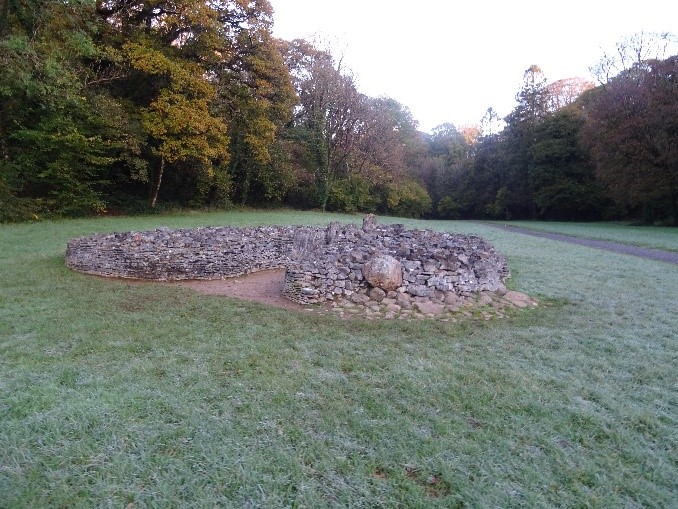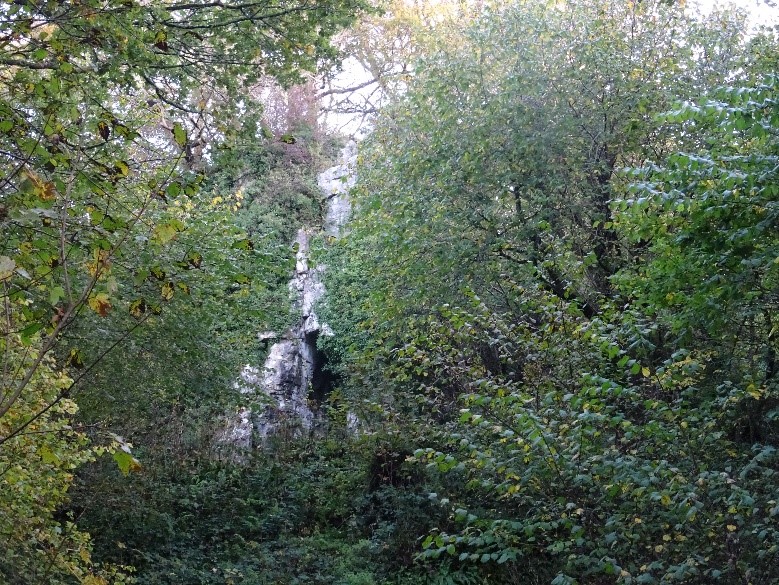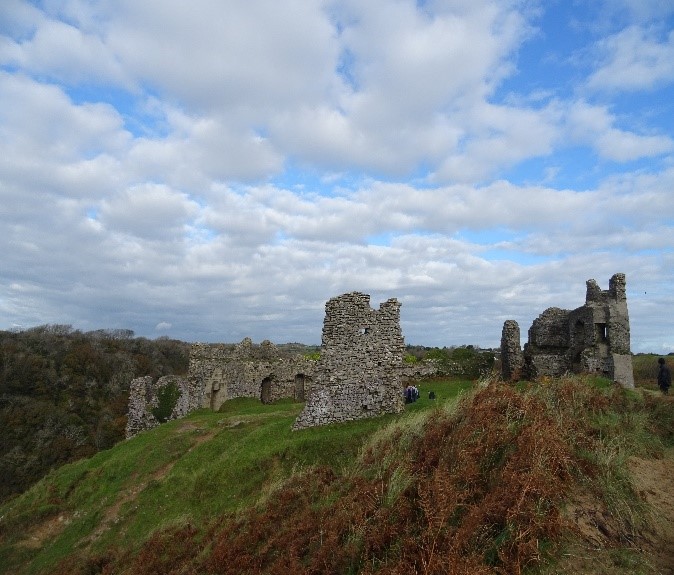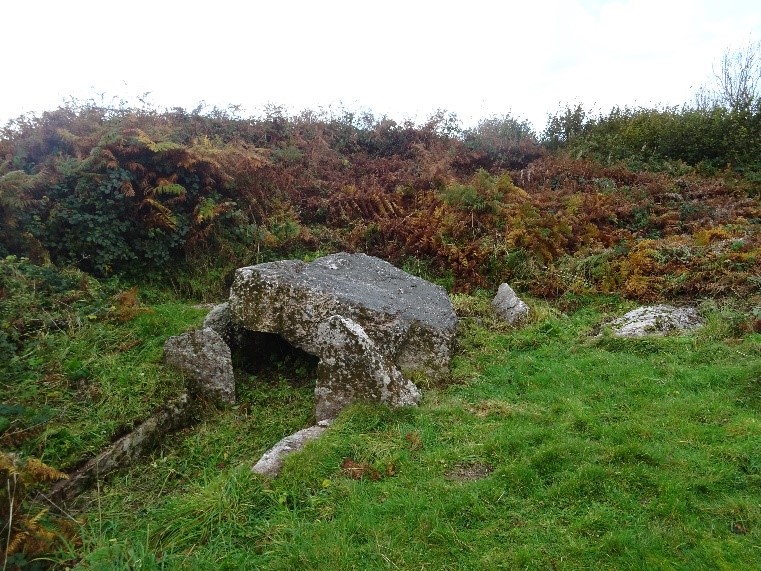Walking Historic and Ancient sites: the Areas around Three Cliffs Bay and Cefn Bryn – Thomas Alexander Husøy
In our final post this side of 2019, Thomas Husøy writes about some of the ancient sites that he has encountered on his walking adventures. We hope this inspires and encourages you to explore some of these amazing local places of interest…weather permitting!
The Gower peninsula is full of historical sites, and in this blog post, I will be discussing some of these sites, namely: Arthur’s Stone (Maen Ceti), the neolithic sites at Parc Le Bereos and some historical sites around Three Cliffs Bay.
Arthur’s Stone or Mean Ceti.
Arthur’s Stone, or in Welsh Maen Ceti, is a large Neolithic burial site on the North-Western edge of the Cefn Bryn Ridge. Cefn Bryn is a ridge on Gower, with the second-highest point of the Gower (186 m) and offers spectacular views over the Gower coast and towards Carmarthenshire, the Brecon Beacons, Glamorgan and Devon.
The main burial mound at Arthur’s Stone is a prominent landmark and has been a visitor attraction for the past half a millennia. The site consists of a large boulder, sitting on top of several smaller rock-pillars holding the large boulder up. The current boulder on top of the burial chambers used to be larger, however, parts of the rock have broken off, this part of the boulder is now laying around the site.

Owing to its prominent position in the landscape, several legends and folktales surround Arthur’s Stone:
- When King Arthur travelled through Carmarthenshire, he discovered a small stone in his shoes and threw it away. The stone flew across the estuary and landed on Cefn Bryn, owing to the powerful touch of the king the stone grew in size as it flew across the estuary, and became the boulder we see today held up by smaller stones.
- Another piece of local folklore suggests that the rock travels down to the sea, in some cases this is a stream, for a drink. According to some, this is a daily event, albeit another variety suggest that this event takes place at New Year’s Eve.
- Folklore suggests that young ladies could use Arthur’s Stone to determine whether or not their partners would be loyal and worthy of keeping. This by taking advantage of the magic properties of Arthur’s Stone by doing a ritual; bring cakes made out of barley meal and honey, dipped in milk and place them on the stone. After placing the cakes on the rock the young lady must crawl around the stone three times if after the third time was completed the partner of the young man would appear if he did not he was not faithful and worth keeping around.
Parc Le Bereos.
On the South-Eastern side of Cefn Bryn, Camp Le Bereos is located, with a scout campsite on the grounds. Close to this there is a large partial restored Neolithic tomb, named Parc Cwm Long Cairn and is only a short walk from Parkmill and is dated to roughly 5850 BCE. It is considered to be of the Severn-Costwold type of burial chambers, the type takes its name from many of these structures being found in the areas around the Severn and Costwold, however, burials of the same type have been found in the Brecons and on the Gower. This type of burial chambers is recognized from their wedge shape. The structure of the cairn is rather large, and therefore it has been nicknamed Giant’s Grave.

The tomb was first discovered in 1859, and first excavated following this, sine this the burial site has been excavated several times. In the tomb, there was discovered remains of forty people in the tomb. These remains seem to be from both males and females, children and adult. The remains of the side suggested that the burial site was in use for somewhere between 300-800 years. Inside the structure, there is a passageway, often called a gallery, with burial chambers on each side.
Close to the Parc Cwm Long Cairn, you find the Catholm Cave, located approximately fifteen meters above the valley bottom where the Cairn is found.

This a large limestone cave, with two main entrances. In 2010 Rock Art dated to the Upper Paleolithic period was discovered in this cave, dated to be the oldest in the British Isles and potentially in North-Western Europe, next to the Rock Art there has been found Late Glacial Tools and animal bones from the Upper Paleolithic period. From the Bronze Age, there were found two human skeletons, an axe and pottery. Unfortunately, owing to vandalism the cave is now partly barred off.
Three Cliffs Bay.

Two sites around Three Cliffs Bay will be briefly discussed here, the first one will be Pennard Castle. This castle is found on the eastern edge of Pennard Castle, on the Pennard Golf course. The overlooks the bay and has dramatic sheer drops towards the Northern and Western side of the Castle. The castle was originally built as a timber ringwork as a part of the Norman invasion of Wales and was used to secure the Lordship of Gower. The current castle ruins we can see today dates from the 13th century when it was rebuilt in stone by using limestone and sandstone. Pennard Castle is a small, but beautiful castle well worth a visit.
Finally, I will finish by mentioning Penmaen Burrows, located to the west of Three Cliffs Bay where another Neolithic burial site is located. Just like Arthur’s Stone, the Panmaen Burrows burial chamber is mostly buried and much harder to find as it buried again after excavations in the 19th century on account of blowing sand. The structure is built of a combination of conglomerate, sandstone and limestone.

All of these sites are relatively easy to get through, albeit Penmaen Burrows is slightly tricky to find, and all of these are located on good public footpaths on the Gower and can be included in a hike or similar.
All photographs by Thomas Alexander Husøy.
